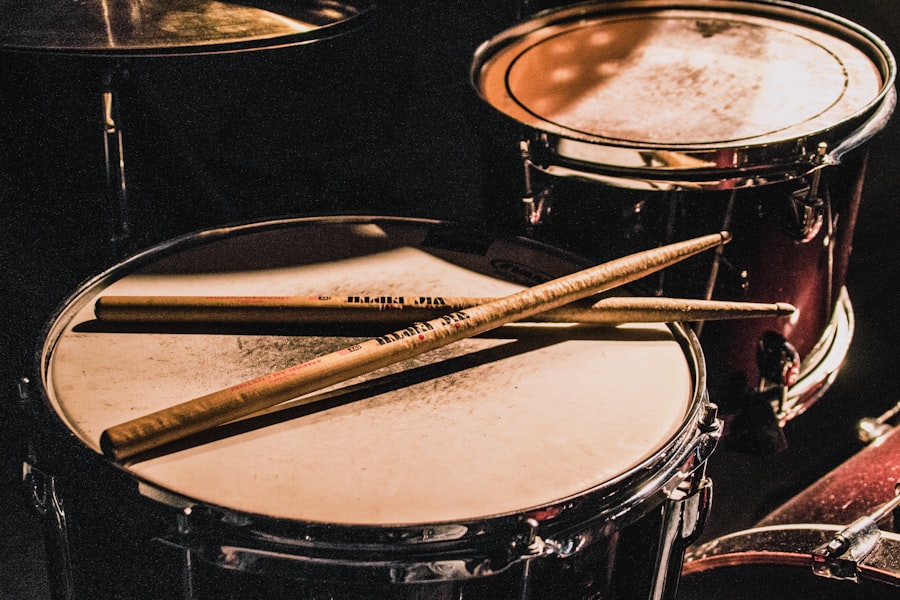In the world of percussion, the snare drum holds a special place, often serving as the backbone of rhythm in various musical genres. However, one of the most common issues that drummers face is related to the snare wire. The snare wire, which is responsible for producing that characteristic crisp sound when the drum is struck, can become problematic over time.
Identifying the issue with the snare wire is crucial for maintaining optimal performance and sound quality. Drummers may notice a lack of sensitivity, an uneven response, or even unwanted buzzing sounds, all of which can detract from the overall musical experience. The problems with snare wires can stem from various factors, including wear and tear, improper installation, or environmental conditions.
For instance, humidity and temperature fluctuations can affect the tension and integrity of the wire. Additionally, drummers may inadvertently damage the snare wire during transport or setup. Understanding these potential issues is the first step in diagnosing and resolving snare wire problems.
By recognizing the symptoms and their underlying causes, drummers can take proactive measures to ensure their snare drum remains in peak condition.
Key Takeaways
- Identifying the issue with the snare wire is crucial for effective troubleshooting and repair.
- Inspecting the snare wire for breaks or bends is essential to determine the extent of damage.
- Examining the tension of the snare wire is important for achieving the desired sound and response.
- Ensuring the snare beds are properly aligned is necessary for optimal snare wire performance.
- Steps for replacing a broken snare wire should be followed carefully to ensure proper installation and functionality.
Checking for Physical Damage: Inspecting the Snare Wire for Breaks or Bends
Visual Inspection
When a drummer suspects an issue with the snare wire, a thorough inspection is the next logical step. This involves closely examining the wire for breaks, bends, or signs of wear that could affect its performance. A broken or bent snare wire can lead to inconsistent sound quality and may even render the drum unplayable.
Thorough Examination
Drummers should take their time during this inspection, as even minor imperfections can have a significant impact on sound. During the inspection process, it is essential to check not only the wire itself but also its attachment points. The snare wire is typically secured to the drum using straps or cords, and any fraying or damage in these areas can compromise the entire system.
Checking for Rust and Corrosion
Drummers should also look for signs of rust or corrosion, which can weaken the wire over time. By identifying any physical damage early on, drummers can take appropriate action to either repair or replace the snare wire before it leads to more significant issues.
Assessing the Tension: Examining the Tension of the Snare Wire
After inspecting for physical damage, assessing the tension of the snare wire is a critical next step. The tension of the snare wire plays a vital role in determining how responsive and sensitive the drum will be during play. If the wire is too loose, it may not produce that sharp crack that drummers desire; conversely, if it is too tight, it can lead to unwanted overtones and a choked sound.
Finding the right balance is essential for achieving optimal performance. To assess tension accurately, drummers should engage in a few simple tests. One effective method is to gently press down on the snare wires while striking the drumhead.
This allows them to gauge how well the wires respond to pressure and whether they are adequately tensioned. Additionally, drummers can listen closely to the sound produced when striking the drum with varying levels of force. This auditory feedback can provide valuable insights into whether adjustments are necessary.
By carefully evaluating tension, drummers can ensure their snare wire is set up for success.
Checking the Snare Beds: Ensuring the Snare Beds are Properly Aligned
| Snare Bed | Alignment | Frequency of Checking |
|---|---|---|
| Snare Bed 1 | Properly Aligned | Every 2 days |
| Snare Bed 2 | Properly Aligned | Every 3 days |
| Snare Bed 3 | Properly Aligned | Every 4 days |
Another crucial aspect of maintaining a well-functioning snare drum involves checking the snare beds—the grooves on the drum shell where the snare wires rest. Proper alignment of these beds is essential for ensuring that the wires make consistent contact with the drumhead when struck. Misaligned snare beds can lead to uneven sound quality and may cause certain areas of the drum to resonate differently than others.
To check for proper alignment, drummers should visually inspect the snare beds for any irregularities or signs of wear. They can also perform a simple test by placing a straight edge across the beds to see if they are level. If any discrepancies are found, adjustments may be necessary to ensure that both sides of the snare wire make even contact with the drumhead.
By taking care to align the snare beds correctly, drummers can enhance their instrument’s overall performance and sound quality.
Replacing the Snare Wire: Steps for Replacing a Broken Snare Wire
In cases where physical damage has rendered the snare wire unusable, replacing it becomes necessary. While this may seem daunting to some drummers, it is a straightforward process that can be accomplished with a few simple steps. First and foremost, drummers should gather all necessary tools and materials, including a new snare wire, a screwdriver, and possibly some replacement straps or cords if needed.
The first step in replacing a broken snare wire involves removing the old wire from its attachment points on the drum. This typically requires loosening any screws or fasteners holding it in place. Once removed, drummers should carefully attach the new snare wire by threading it through the same points as before, ensuring that it is secured tightly but not overly so.
After reattaching it, drummers should check for proper tension and alignment before testing it out during play. By following these steps diligently, drummers can restore their snare drum’s functionality and sound quality.
Adjusting the Snare Wires: Making Adjustments to Improve Sound and Response

Fine-Tuning Tension and Placement
Once a new snare wire has been installed or an existing one has been repaired, making adjustments to improve sound and response is essential for achieving optimal performance. This process involves fine-tuning both tension and placement to ensure that the snare wire produces a crisp and clear sound when struck. Drummers should take their time during this phase, as even minor adjustments can lead to significant improvements in overall sound quality.
Experimenting with Tension and Placement
To begin adjusting the snare wires, drummers should experiment with different tension levels by loosening or tightening them incrementally. It is advisable to make small adjustments and test play after each change to gauge how it affects sound quality and responsiveness. Additionally, drummers may want to explore different placements of the wires on the drumhead to find an optimal position that enhances sensitivity without compromising tone.
Achieving a Personalized Sound
Through careful adjustments and experimentation, drummers can achieve a personalized sound that suits their playing style.
Testing the Snare Wire: Checking the Functionality of the Repaired Snare Wire
After making necessary adjustments to the snare wire, testing its functionality is crucial before returning to regular practice or performance. This testing phase allows drummers to evaluate how well their repairs or adjustments have worked and whether further modifications are needed. A thorough test will help ensure that everything is functioning as intended and that no additional issues have arisen during repairs.
During testing, drummers should play various rhythms and dynamics on their snare drum while paying close attention to how it responds. They should listen for clarity in sound and check for any unwanted buzzing or rattling noises that may indicate lingering issues with either the wire or its alignment. If everything sounds good and feels right under their hands, then they can confidently return to playing knowing their snare drum is in top condition.
Preventative Maintenance: Tips for Preventing Future Snare Wire Issues
To avoid future problems with snare wires, implementing preventative maintenance practices is essential for any drummer who values their instrument’s performance. Regular inspections should become part of a drummer’s routine; checking for signs of wear or damage can help catch potential issues before they escalate into more significant problems. Additionally, maintaining proper storage conditions—such as keeping drums in a climate-controlled environment—can help protect against environmental factors that may affect snare wires.
Another effective preventative measure involves being mindful during transport and setup. Drummers should take care when moving their gear to avoid unnecessary stress on components like snare wires. Using protective cases and padding can help minimize risks associated with physical damage during transit.
Furthermore, establishing a regular cleaning routine for both drums and hardware will help maintain their overall condition and longevity. By adopting these preventative strategies, drummers can enjoy a more reliable and consistent performance from their snare drums over time.
If you’re a drummer dealing with a broken snare wire on your snare drum, you may find this article on how to raise a happy and healthy mini Goldendoodle to be a welcome distraction. While fixing your snare drum is important, taking care of your furry friend is just as crucial for overall well-being. Remember to give your Goldendoodle some extra love and attention while you work on repairing your drum.
FAQs
What causes a snare drum’s snare wire to break?
Snare wires can break due to excessive tension, poor quality materials, or general wear and tear from regular use.
How can I prevent my snare wire from breaking?
To prevent your snare wire from breaking, make sure to regularly check for any signs of wear and tear, avoid over-tightening the wires, and invest in high-quality snare wires.
Can a broken snare wire be repaired?
Yes, a broken snare wire can be repaired by replacing the broken wire with a new one. It is a relatively simple and inexpensive fix.
How do I know if my snare wire is broken?
You can tell if your snare wire is broken if you notice a lack of snare response or if the snare wires are visibly damaged or detached from the drum.
Where can I purchase replacement snare wires?
Replacement snare wires can be purchased at music stores, online retailers, or directly from the drum manufacturer. It is important to ensure that the replacement wires are compatible with your specific snare drum model.





